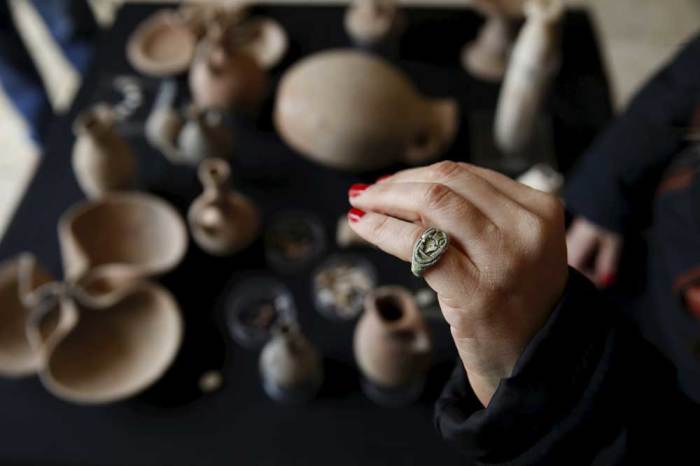Archaeological Discovery: Two 'Rare' Seals From First Temple Period Discovered in Jerusalem

Israeli archaeologists have discovered two "rare" seals dating back to the First Temple period in what is now a parking lot in Jerusalem.
The two seals were found in the Giv'ati parking lot in Jerusalem's City of David earlier this month, the Israel Antiquities Authority has confirmed.
What makes the two seals so rare is their date from the First Temple era, as well as the fact that one of the seals belonged to a woman named Elihana bat Gael.
Gael's seal, discovered in a large stone structure in the parking lot, describes the Hebrew woman as being "exceptional." The second seal belongs to a man named Sa'aryahu ben Shabenyahu.
"Finding seals that bear names from the time of the First Temple is hardly a commonplace occurrence, and finding a seal that belonged to a woman is an even rarer phenomenon," the excavators behind the Giv-ati project said in a press release from the Israel Antiquities Authority.
According to Breaking News Israel, the seals were discovered embedded in large stone pillars that likely made up an administrative building during the First Temple period.
The archaeologists behind the dig, including Dr. Doron Ben-Ami, Yana Tchekhanovets and Salome Cohen, added in the IAA press release that the seals were likely worn as rings and used for signing documents.
"Personal seals, such as those of Elihana and Sa'aryahu, were used for signing documents, and were frequently inlaid as part of a ring that was worn by the owner. In antiquity they designated the identity, genealogy and status of the owner of the seal," the directors said.
Archaeologists report that the finding is especially rare because the seal belonged to a woman. Very few women during the First Temple period possessed seals due to their low economic status and dependency on their husbands or fathers for financial support.
The fact that this recently-discovered seal bore the name of Elihana bat Gael, the effeminate form of the Bible's "Eli," proves that the woman had an exceptionally high social standing that likely stemmed from her family's wealth, rather than her husband's.
There have been numerous archaeological discoveries in Jerusalem dating back to the First Temple period.
The Israel Antiquities Authority announced in September 2012 that archaeologists had unearthed a large cistern next to the Temple Mount that shed light on how the city used public water 2,500 years ago.
Archaeologist Tsvika Tsuk of the Israel Nature and Parks Authority said in an Israel Antiquities Authority press release that the cistern likely served water to the temple, as well as pilgrims.
"It is possible that the large cistern found next to the Temple Mount was used in the daily operation of the Temple itself, and also served the pilgrims who came to the Temple and needed water for washing and drinking," Tsuk said.
The discovery of the man-made reservoir, which held 250 cubic meters of liquid, also proved that the people of the First Temple period did not rely solely on the nearby Gihon Spring for their water supply, but rather had enough construction knowledge to build their own pool.





























